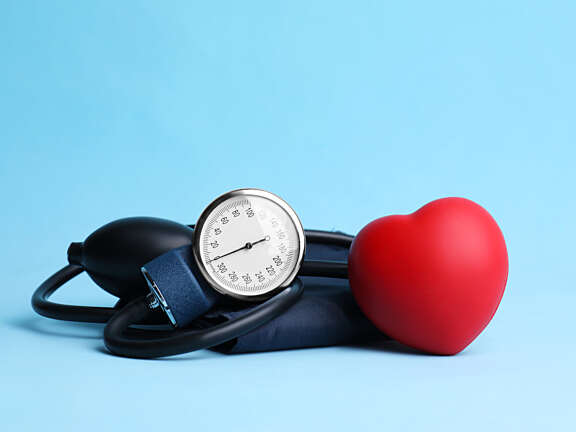Five Foods that Lower Blood Pressure


The number of cases of high blood pressure has risen considerably over the past decade. Nearly half of US adults—119.9 million people—have high blood pressure (or hypertension). Plus, 46% of adults worldwide have high blood pressure and don’t know it. Therefore, knowing your numbers is extremely important.
What Is Healthy Blood Pressure?
Your blood pressure reading is made up of two numbers. The top number, the systolic reading, is the pressure blood places on your arteries each time your heart beats. The lower number, the diastolic reading, is the pressure on your arteries between beats, when your heart is resting.
A healthy blood pressure level is less than 120/80 mmHg. If your blood pressure level is consistently at or above 130 to 139 mmHg systolic or 80 to 89 mmHg diastolic, you have high blood pressure.
Left untreated, high blood pressure can put you at increased risk of a heart attack or stroke.
Lower Blood Pressure: Foods to Add to Your Diet
Making healthy lifestyle changes (exercise, weight loss, stress reduction, no smoking) can help to lower blood pressure. Diet is incredibly important too. Here are five foods to add to your diet that can help to lower your blood pressure naturally.
1. Bananas
A healthy ratio of sodium to potassium is important for maintaining healthy blood pressure. When you eat too much salt and not enough potassium, your body retains water. This puts pressure on your blood vessels, raising your blood pressure.
Bananas are high in potassium, which helps your body get rid of excess sodium through urine. Plus, bananas contain vitamin C and catechins, which improve endothelial function. This means they help the cells that line your blood vessels to work more effectively, so blood flows as it should.
For healthy blood pressure, experts recommend getting 2,600 to 3,400 mg of potassium daily. An average banana contains between 400 to 450 mg of potassium. Consult with your provider to determine the right amount of potassium for you.
2. Beets
Beets are rich in nitrates, which your body converts to nitric oxide (NO). NO helps your blood vessels to open and relax, improving blood flow and lowering blood pressure.
While there are many ways to add beets to your diet—in salads, cooked in soups, and roasted—beet juice is one of the most concentrated sources. In a study of people with high blood pressure, those who drank 250 ml of beetroot juice daily experienced lower blood pressure.
3. Leafy Green Vegetables
Leafy green vegetables, such as cabbage, spinach, kale, and Swiss chard contain important nutrients that support your blood pressure.
Leafy greens have magnesium, an essential mineral that relaxes blood vessels. They also supply potassium and nitrates that your body converts to NO.
For healthy blood pressure, strive to eat about a cup of leafy green vegetables a day. Add them to soups, sandwiches, and smoothies, and cook them as a healthy side dish.
4. Blueberries
While most berries help to support healthy blood pressure, blueberries top the list. They contain high levels of phytonutrients, called anthocyanins, which support the lining of your blood vessels to keep blood flowing as it should. Blueberries are also known to decrease systolic blood pressure.
Research suggests eating a cup of blueberries a day (about 200 grams) for a month may help to lower blood pressure.
5. Garlic
Garlic contains a compound called allicin, which increases the amount of two blood pressure-lowering substances—NO and hydrogen sulfide. Research also suggests allicin helps to suppress your body’s production of angiotensin, which is the hormone that contracts your blood vessels and raises your blood pressure.
While fresh garlic is best, garlic powder and oil also produce these benefits.
Three Blood Pressure Raising Foods to Avoid
In addition to eating foods that are good for your blood pressure, it’s also important to avoid foods that can lead to hypertension, including:
- Sodium: Salt, whether it’s in your salt shaker or found in processed foods like potato chips, soups, and frozen meals, can cause your body to retain water. This puts pressure on your blood vessels, which can raise your blood pressure. The American Heart Association recommends limiting sodium to less than 1,500 mg per day.
- Caffeine: Especially if you are not used to drinking it, caffeine can really raise your blood pressure. Some experts believe that’s because caffeine causes your body to release adrenaline, which spikes blood sugar. Others believe it may suppress the hormone that allows your arteries to open. If you have high blood pressure, ask your doctor how much caffeine is safe for you to consume.
- Alcohol: Alcohol increases levels of renin—a hormone that causes blood vessels to narrow. Alcohol also reduces your body’s production of vasopressin, which can lead to dehydration and higher blood pressure. Plus, it reduces the sensitivity of the baroreceptors in your body, which regulate your blood pressure.
What you eat can make a very real difference in your blood pressure levels and overall health. Adding these foods to your diet, and avoiding ones that can raise your blood pressure, can go a long way toward helping you to maintain healthy blood pressure levels.
